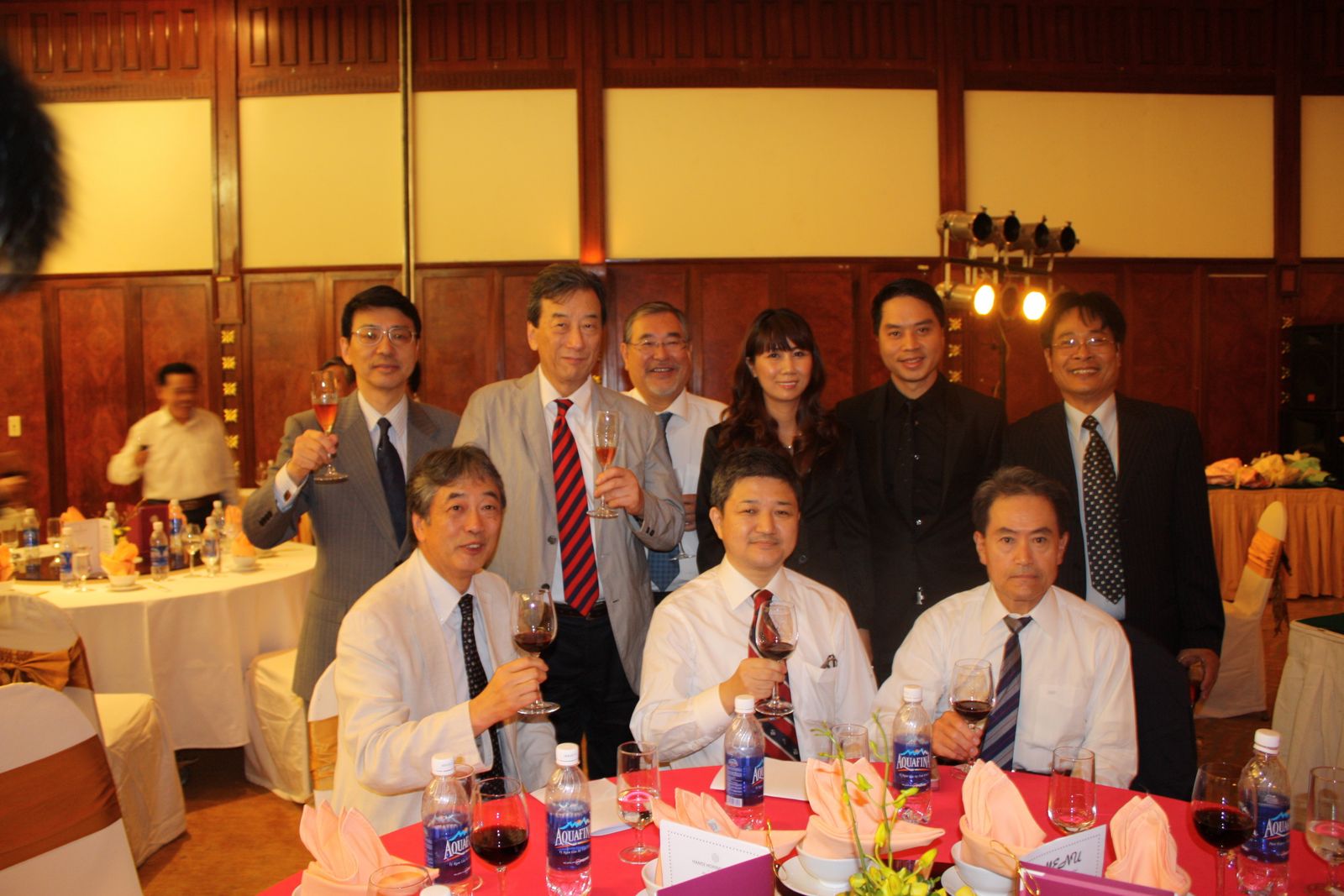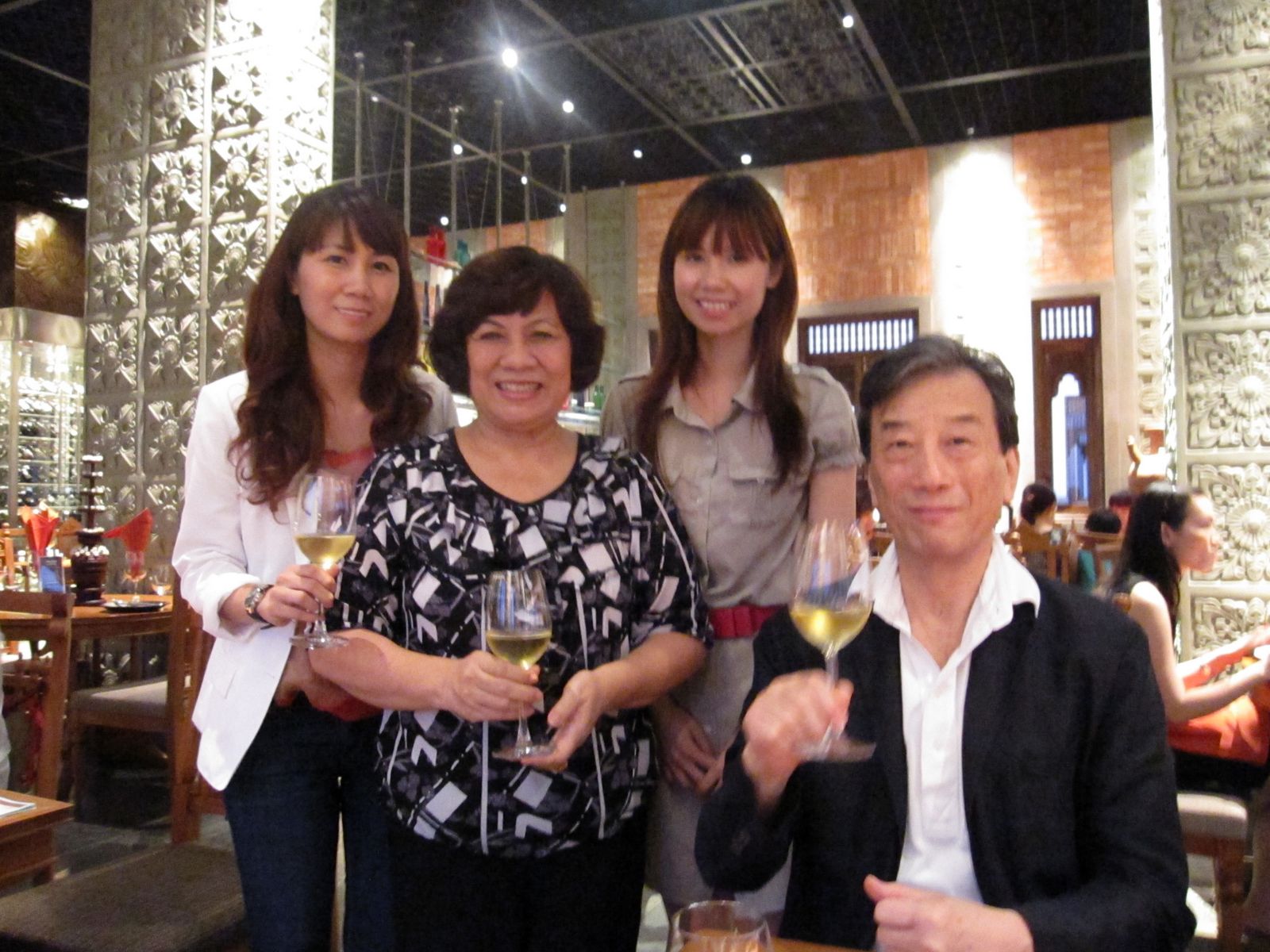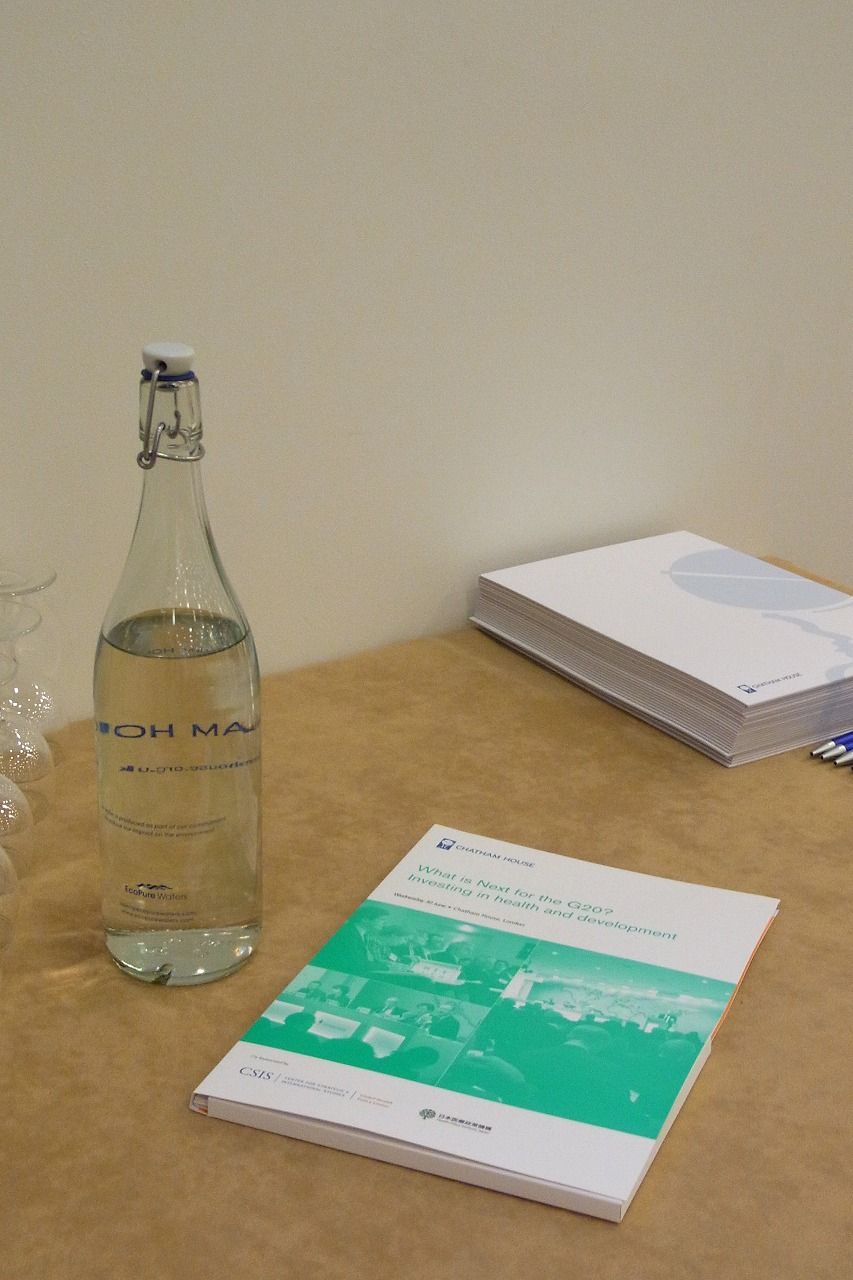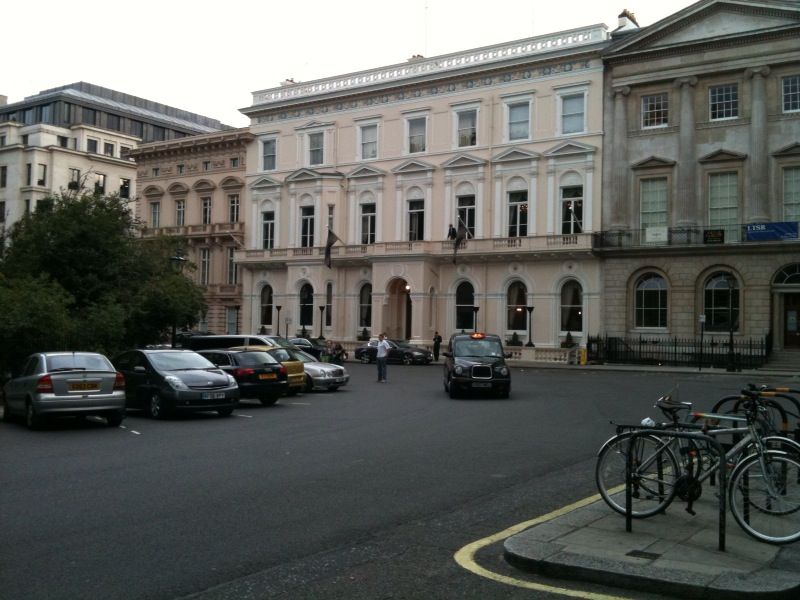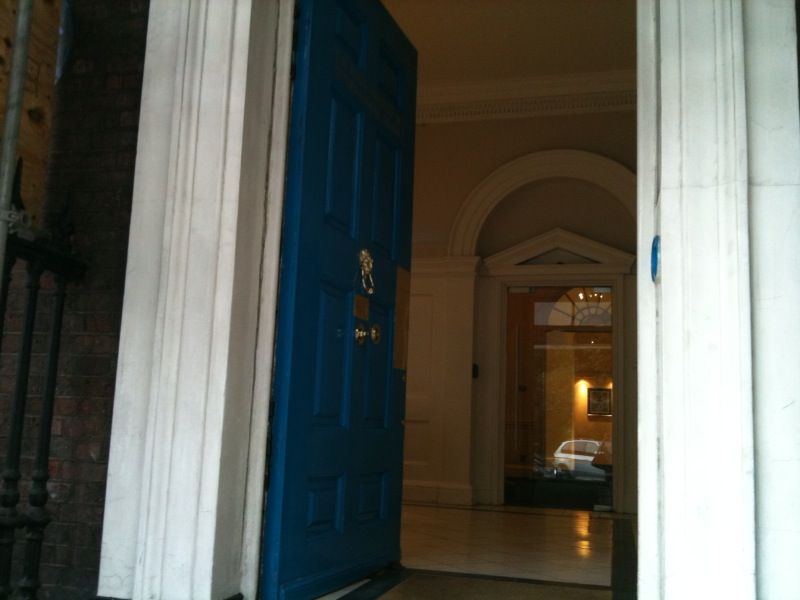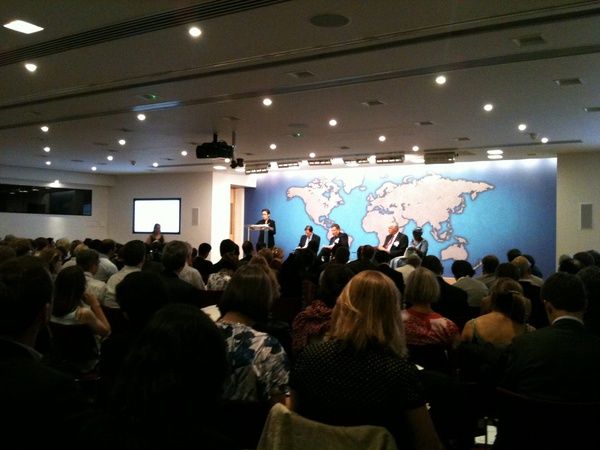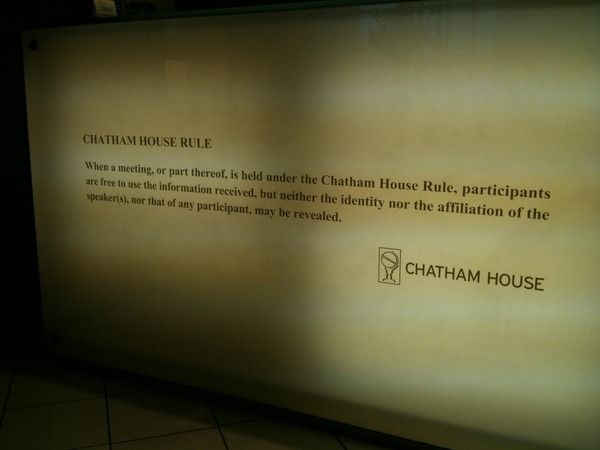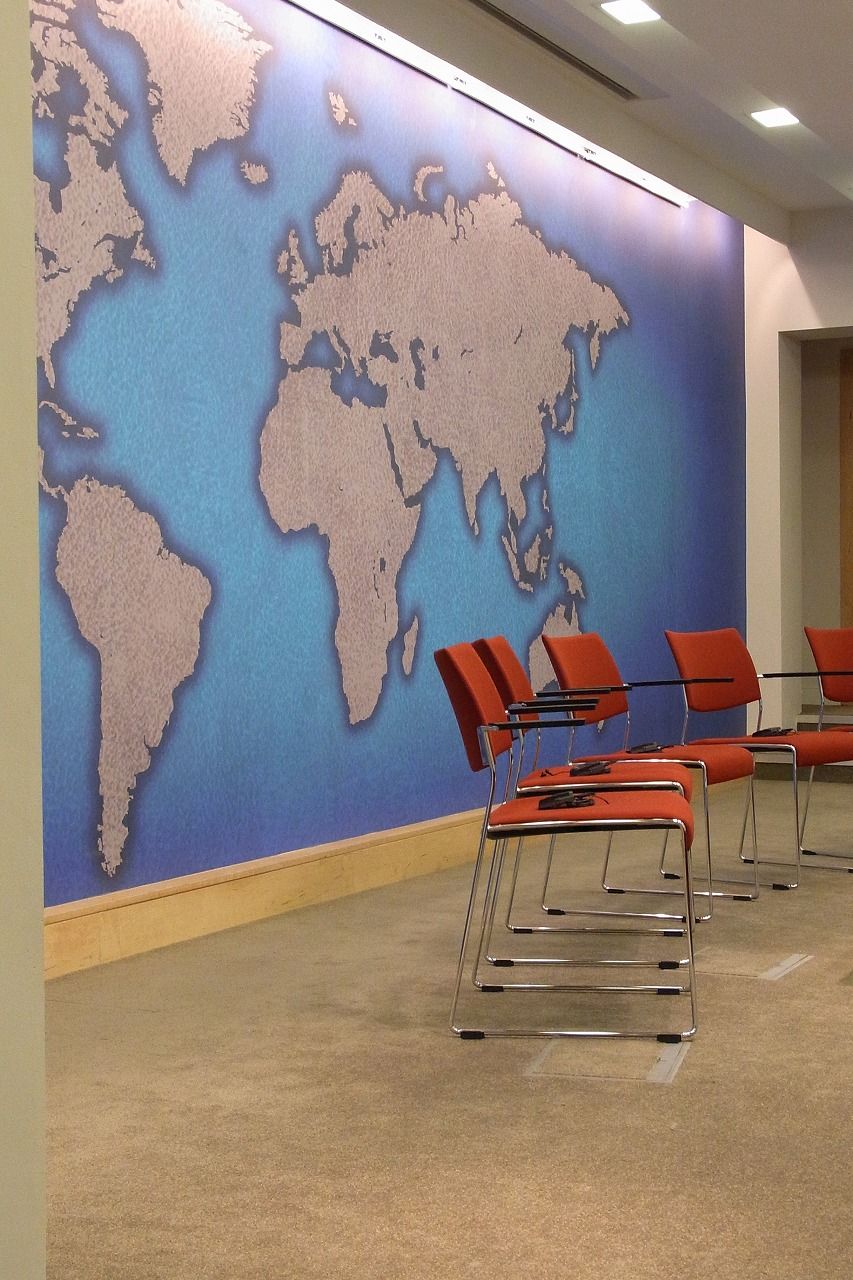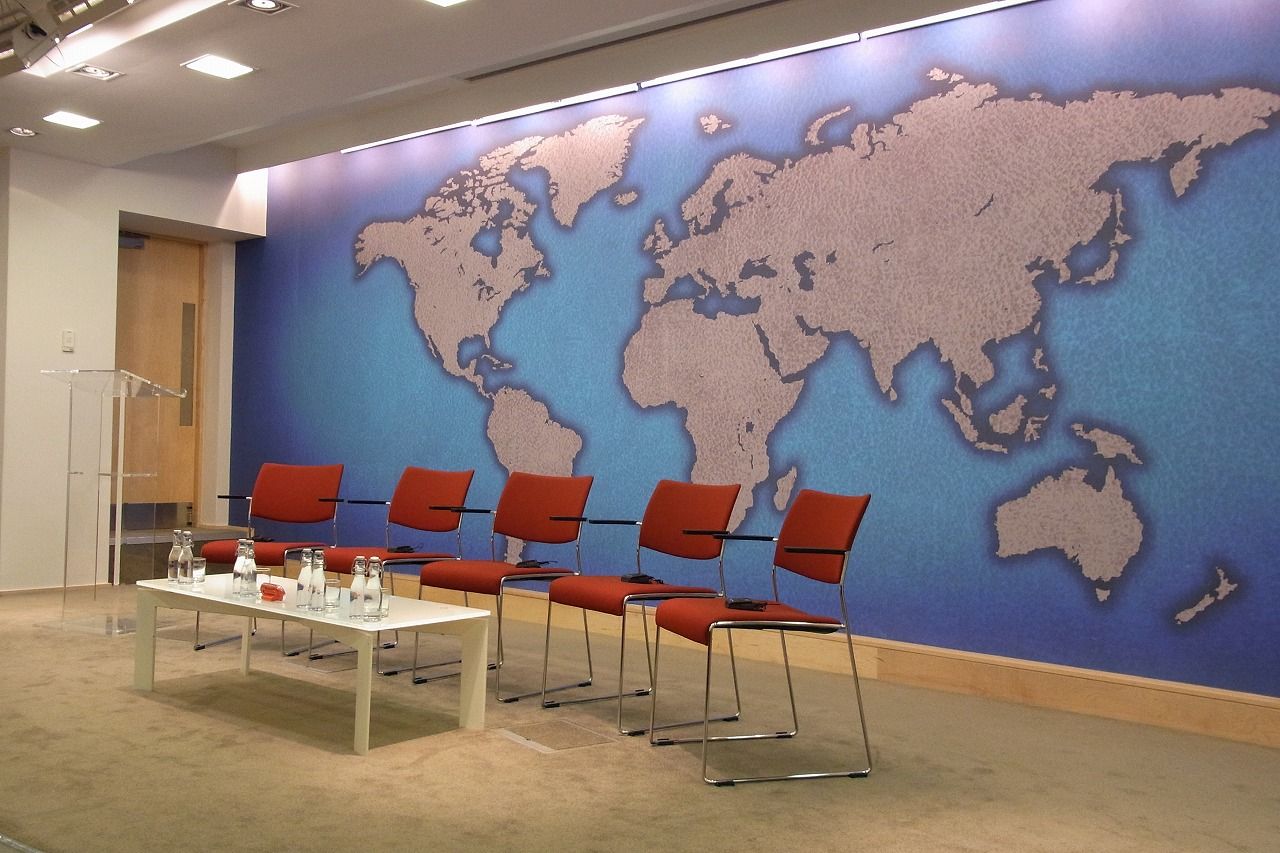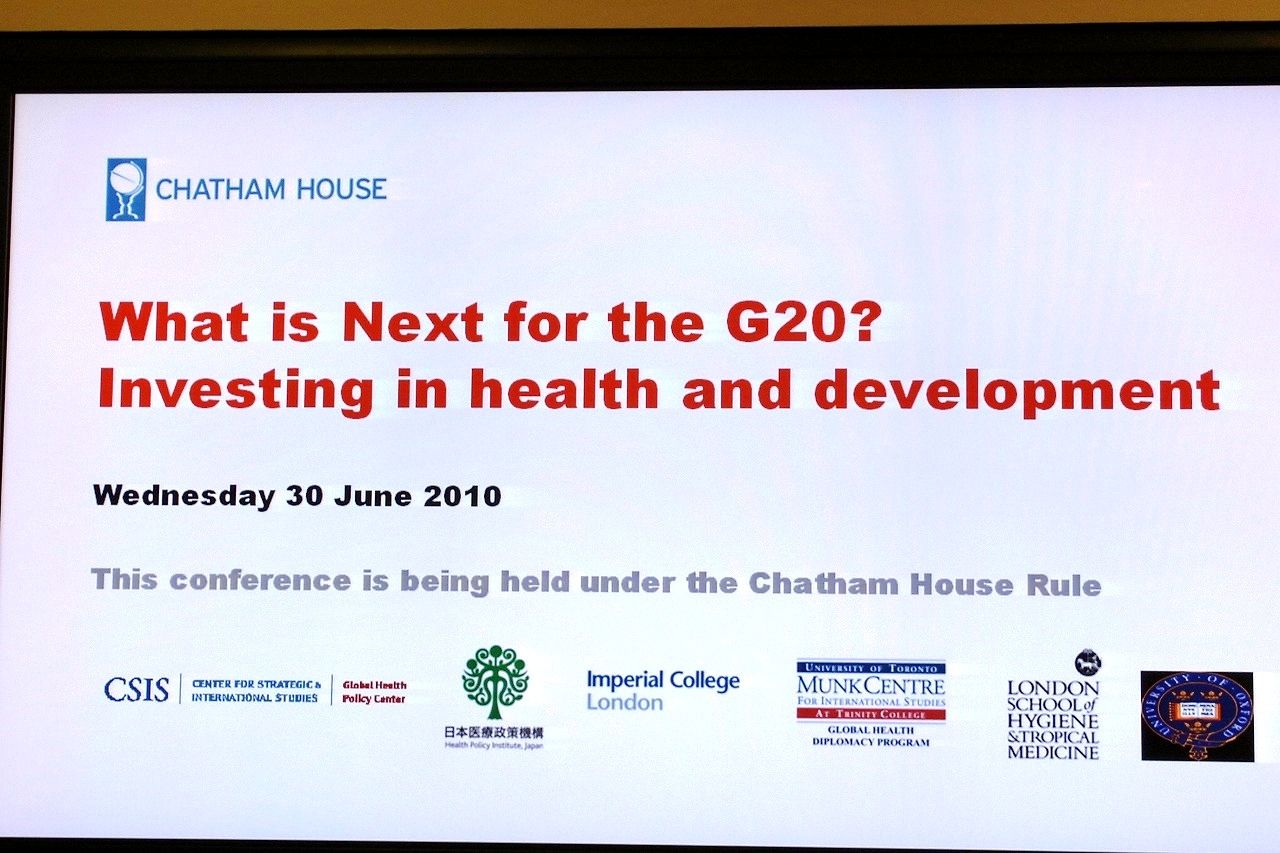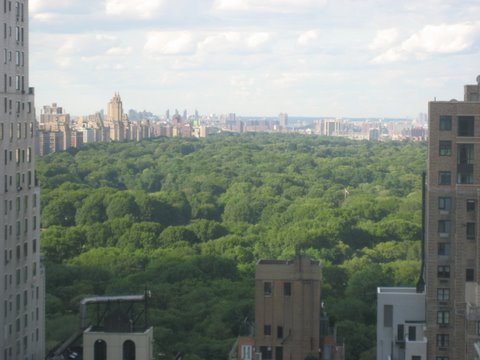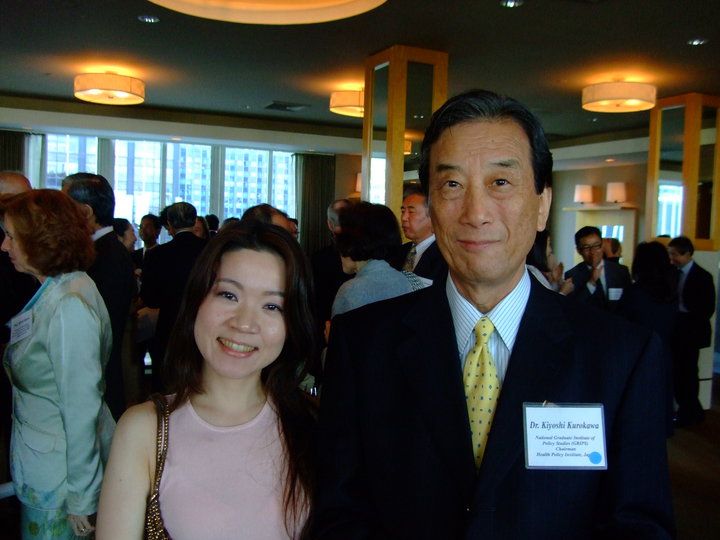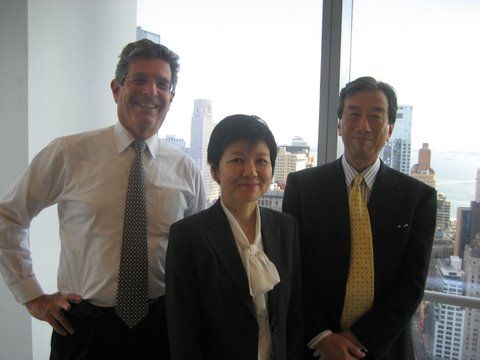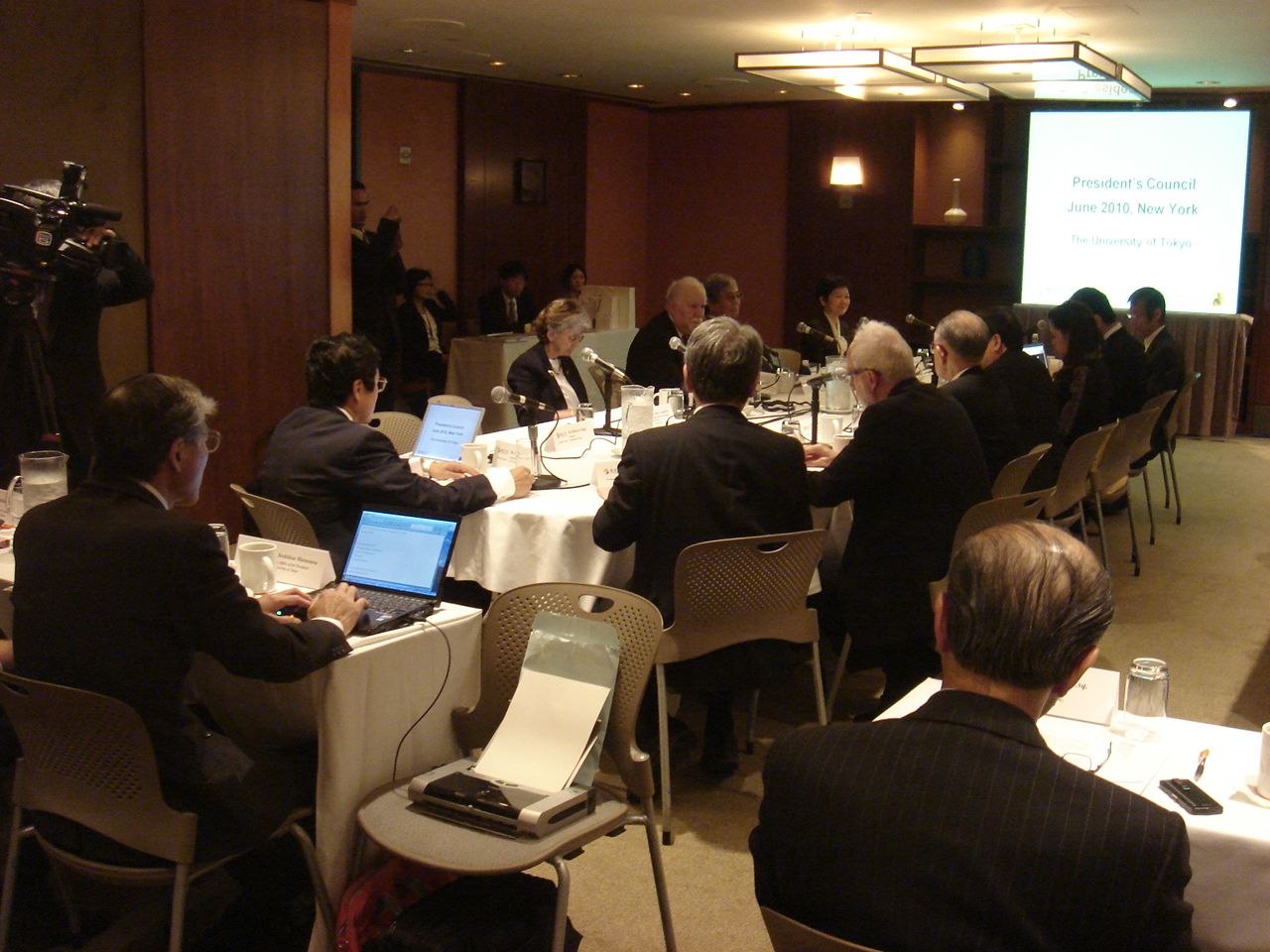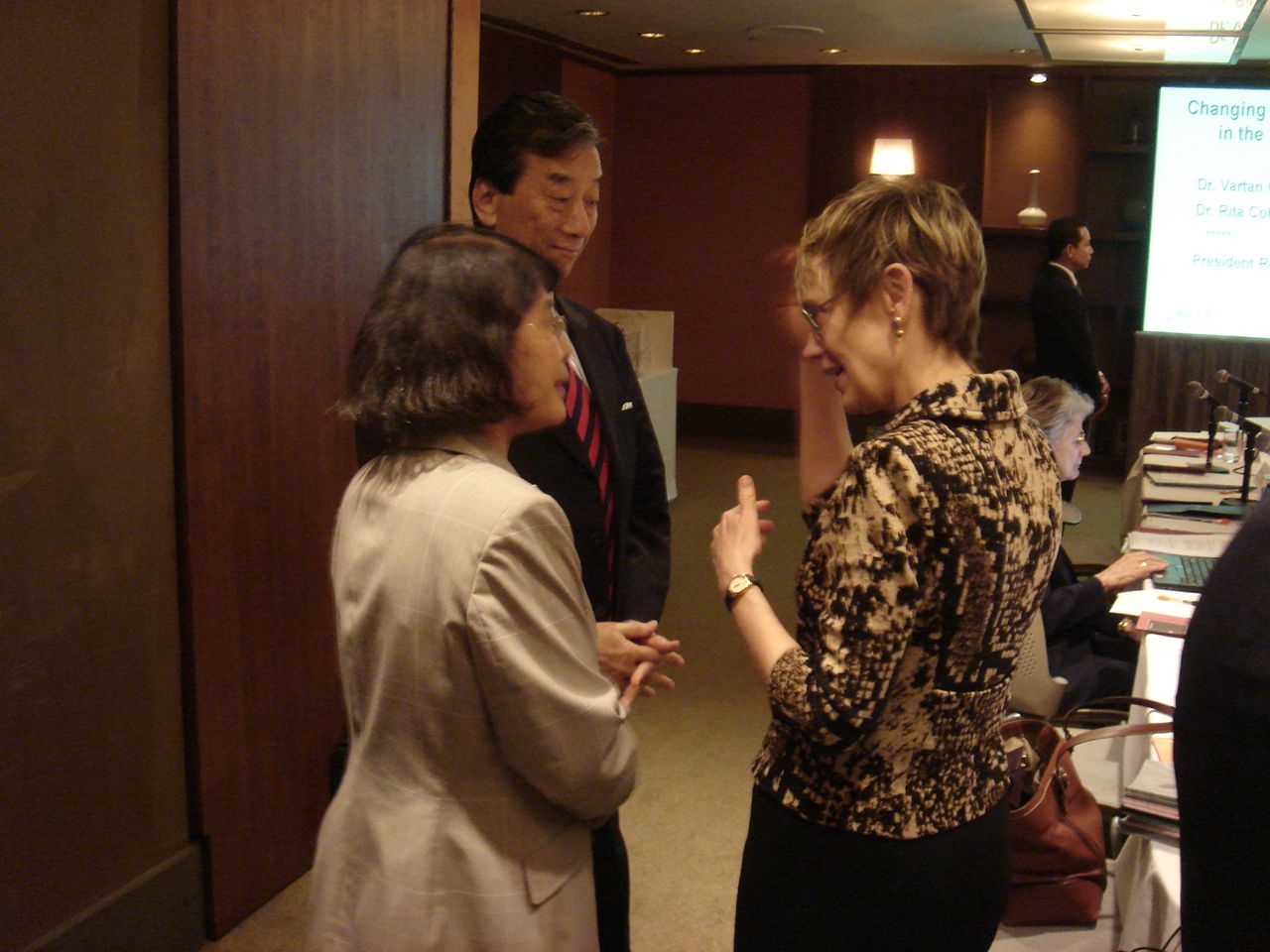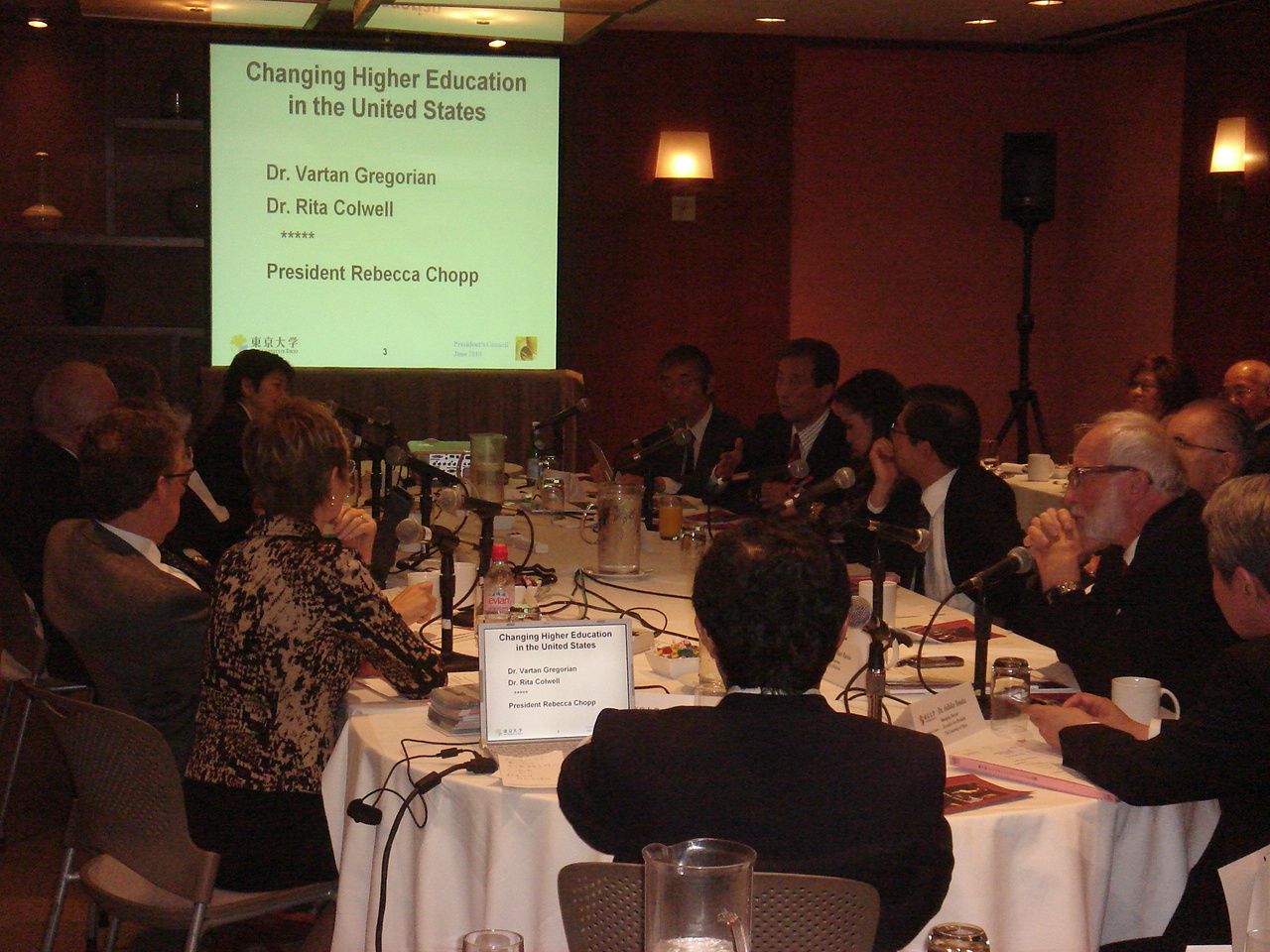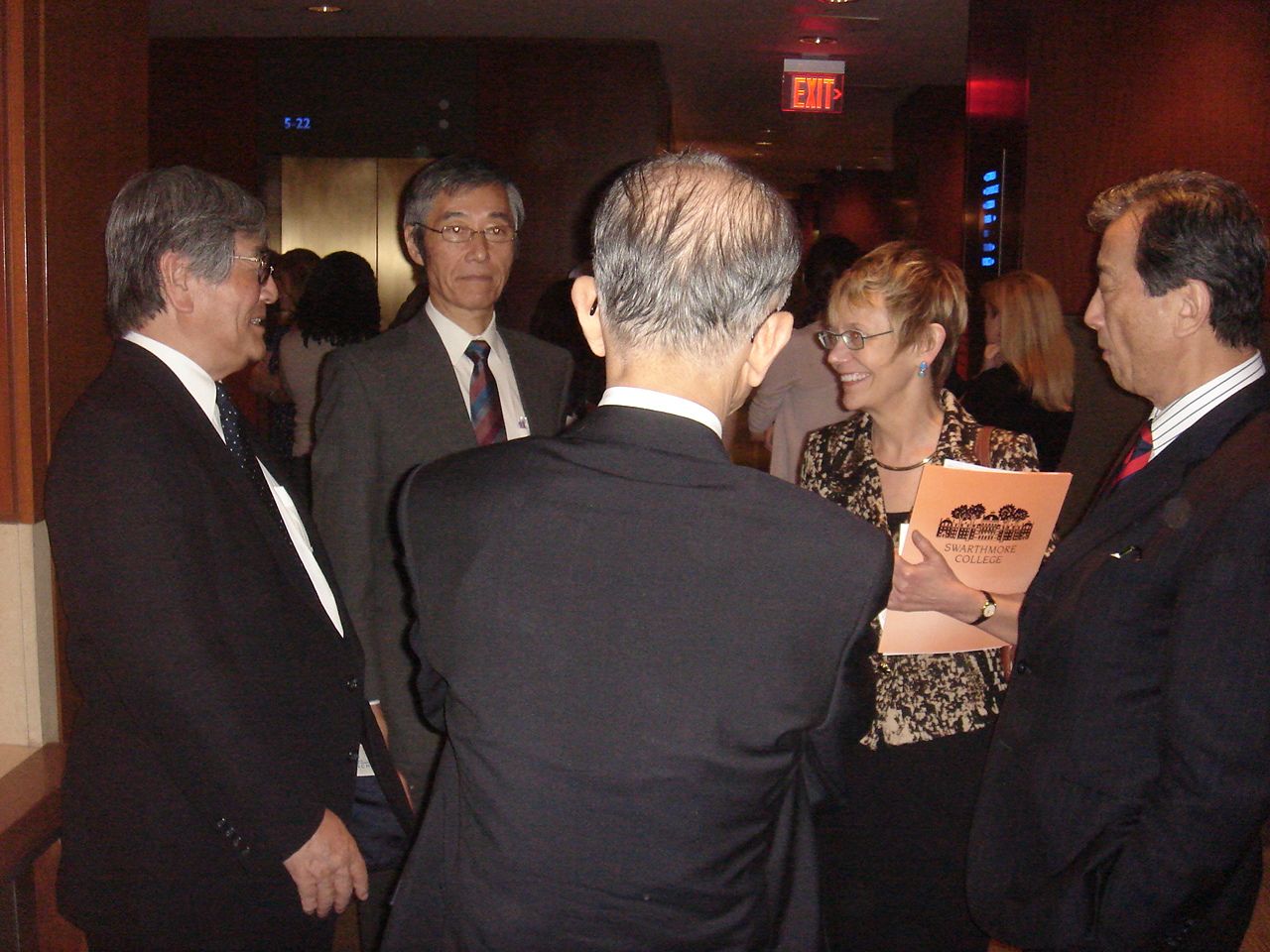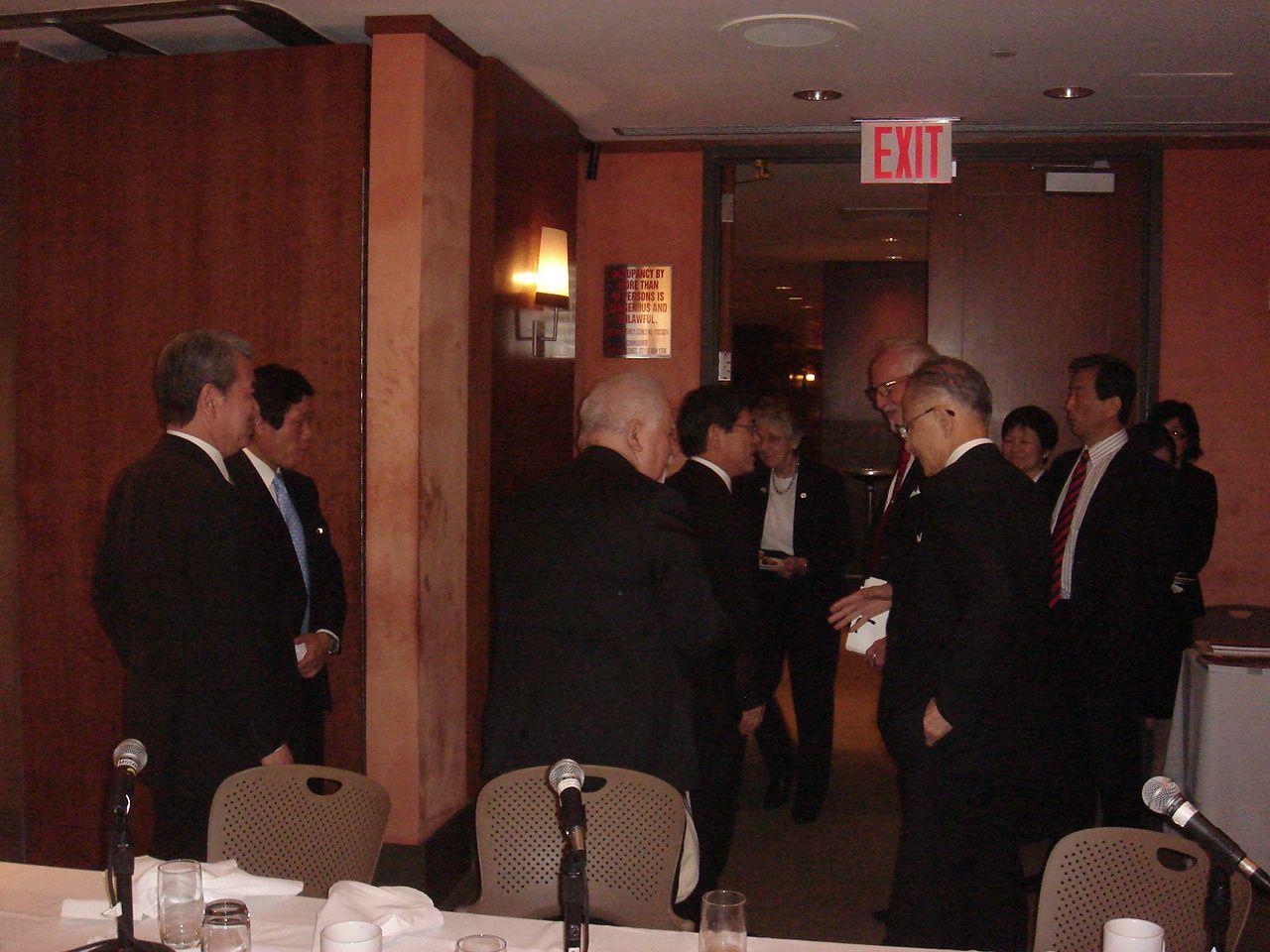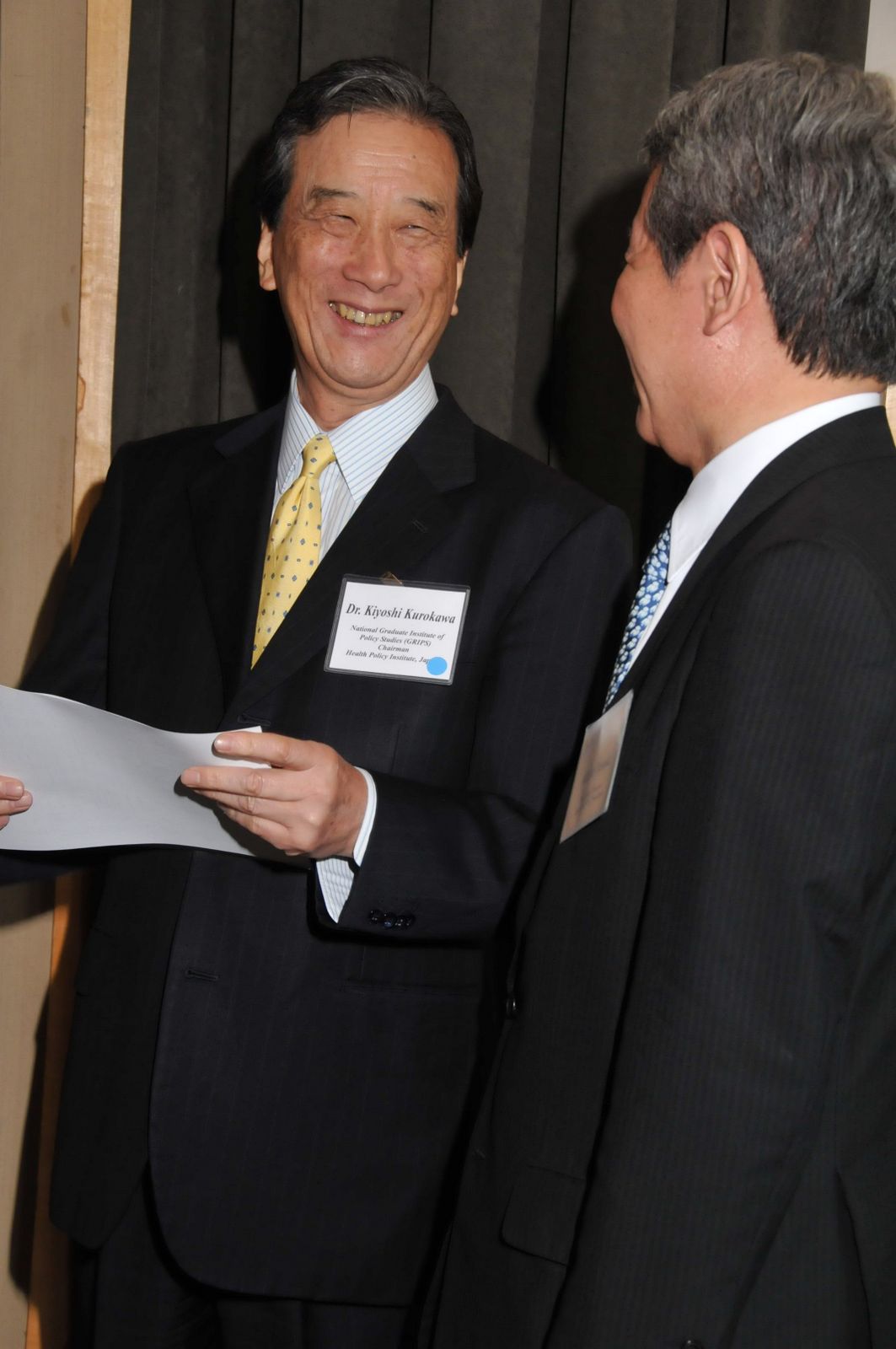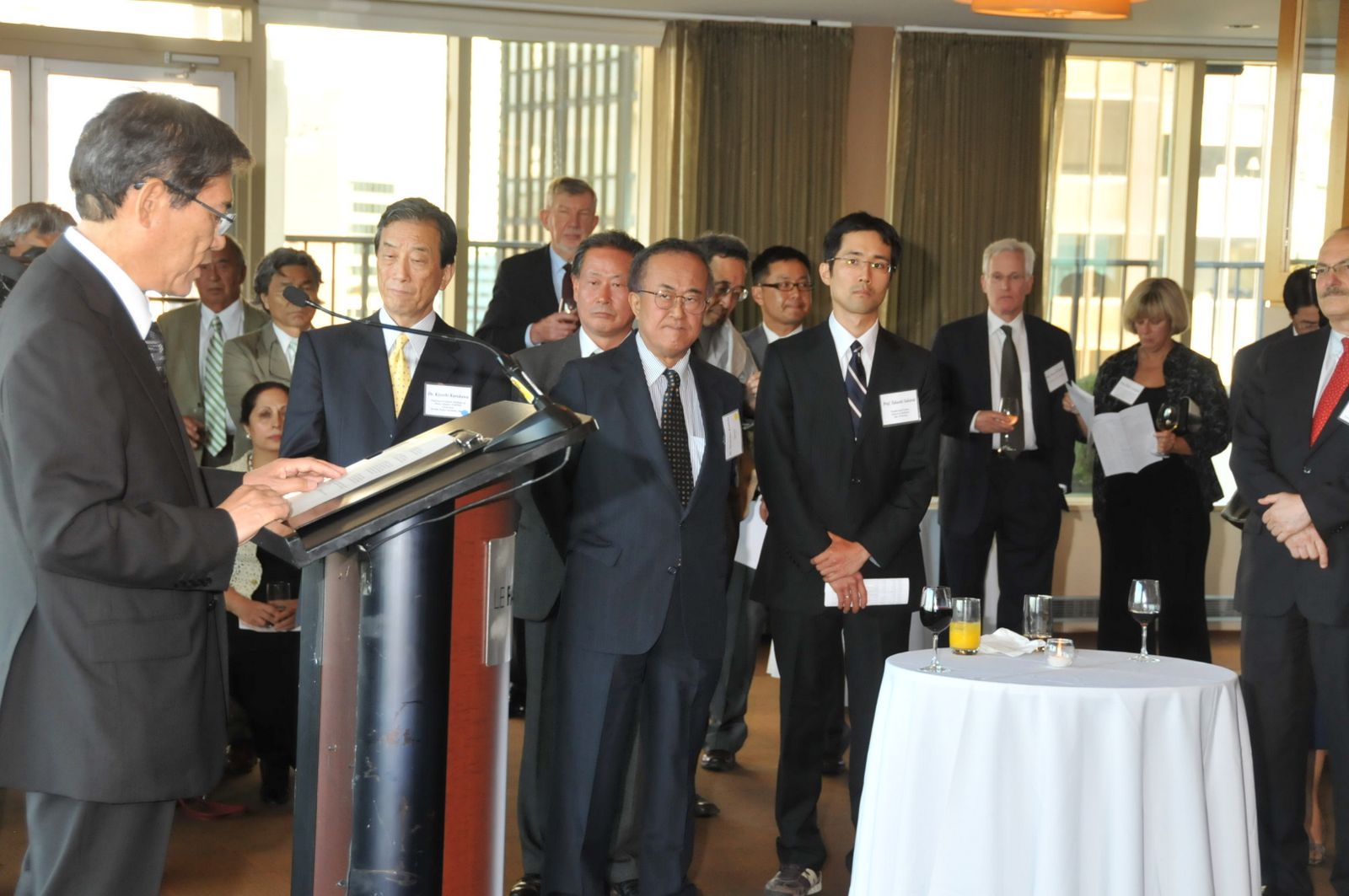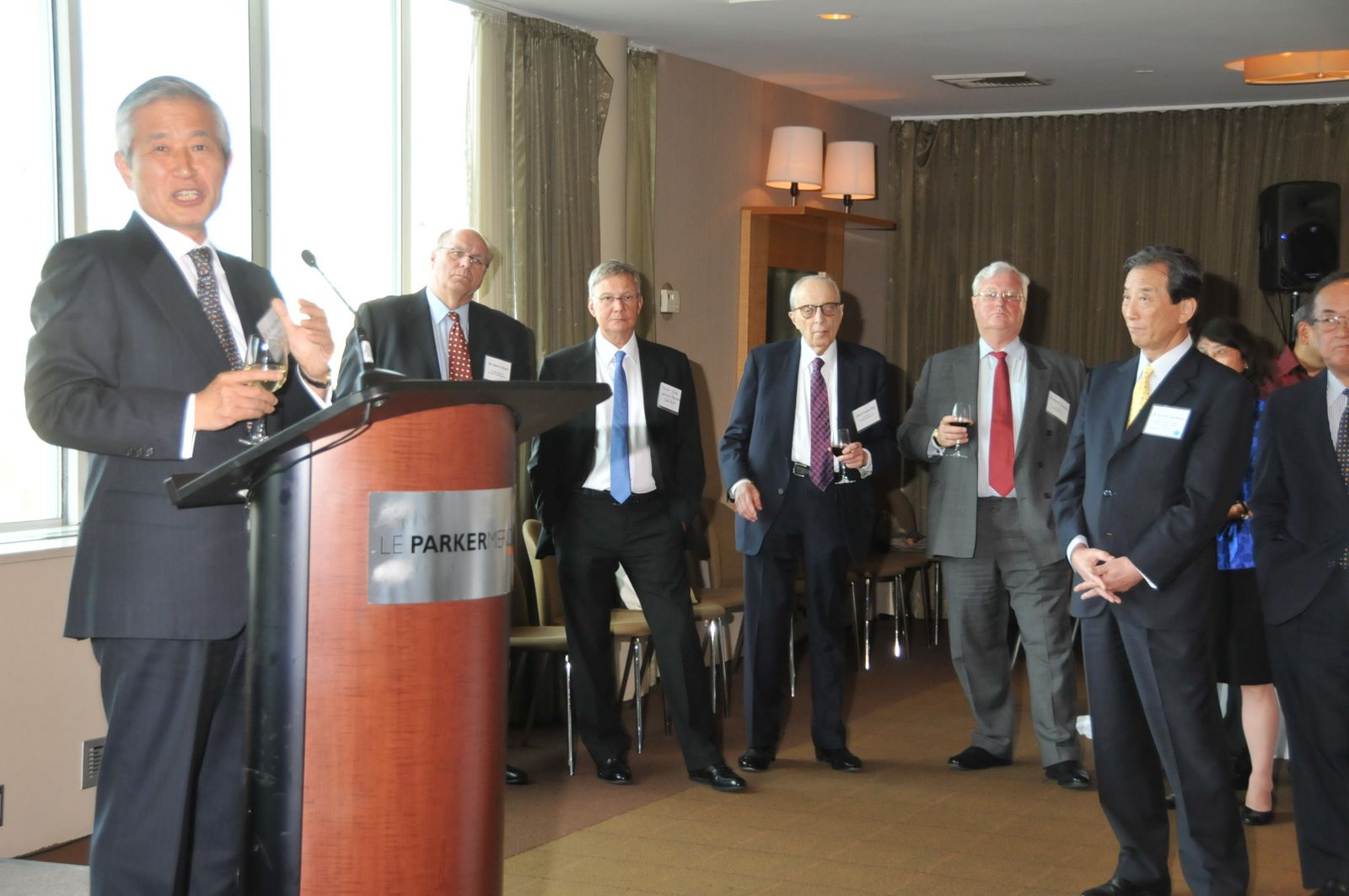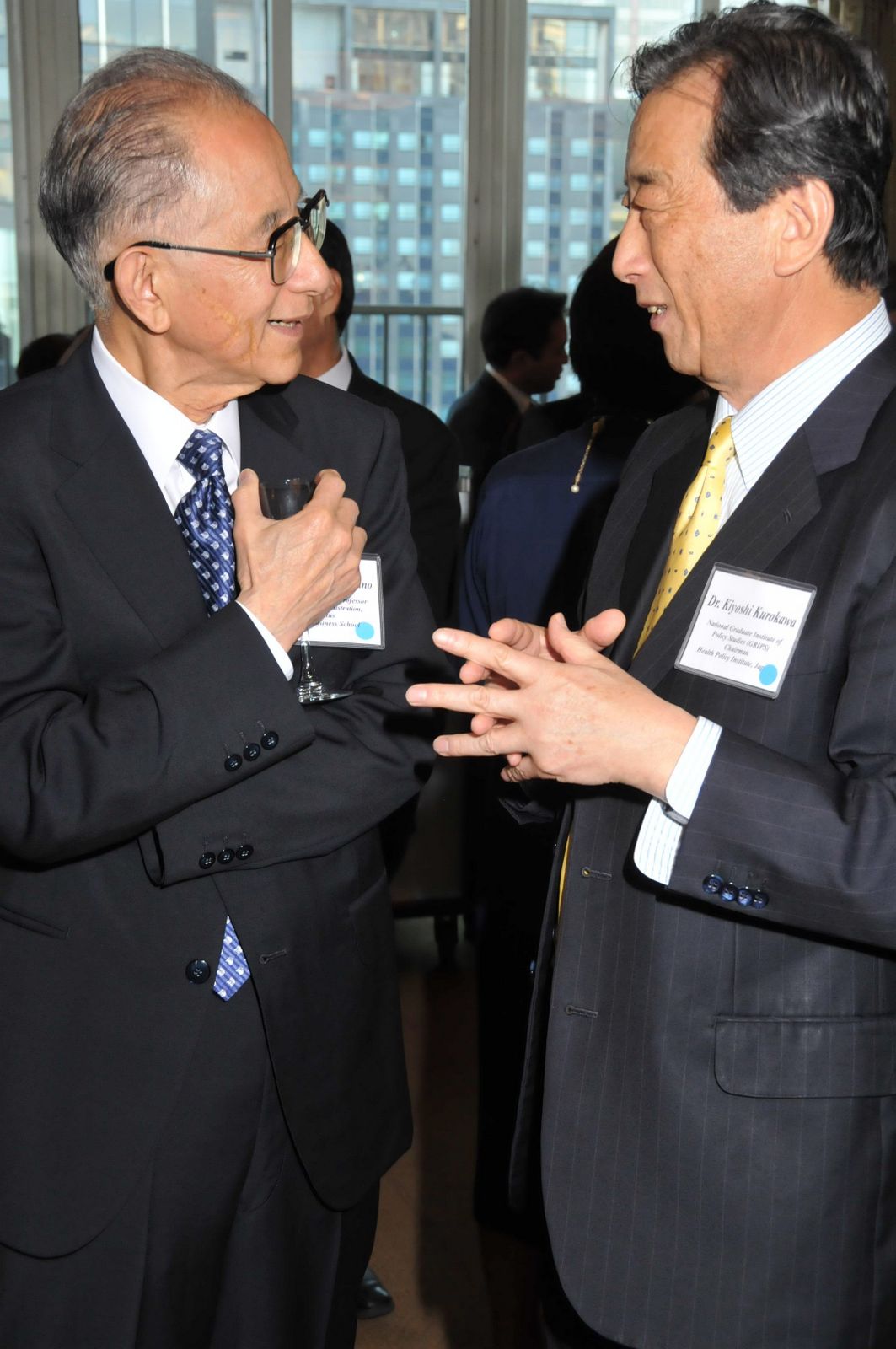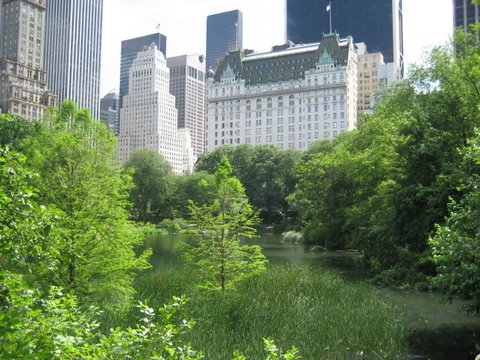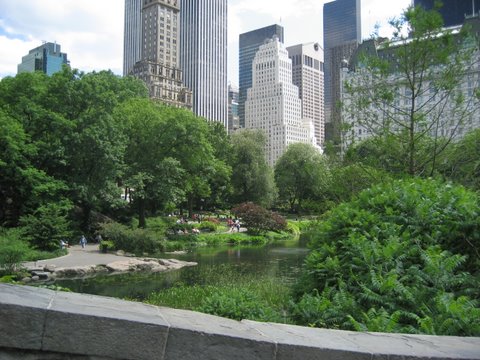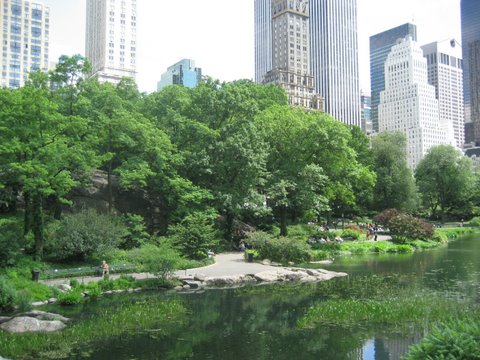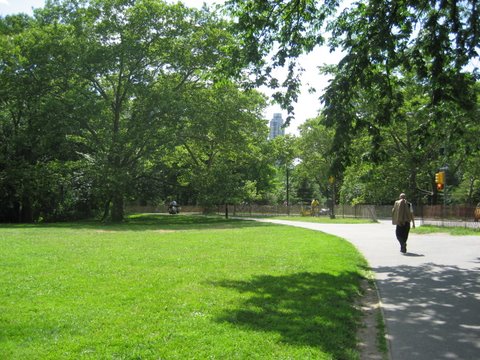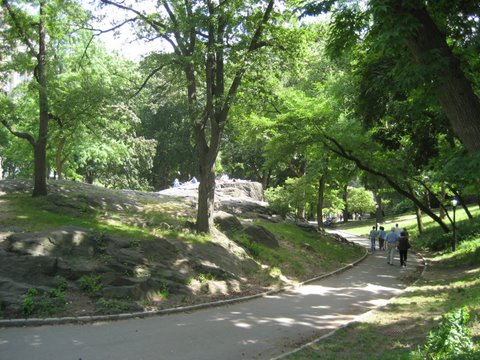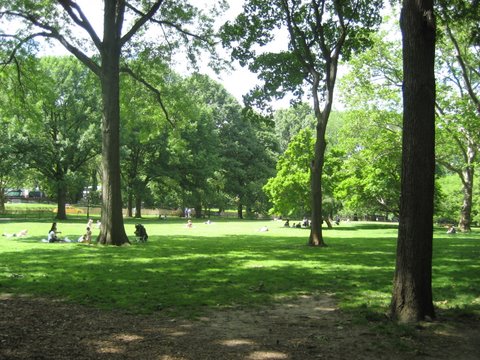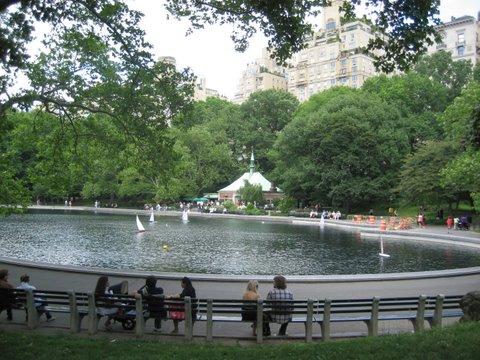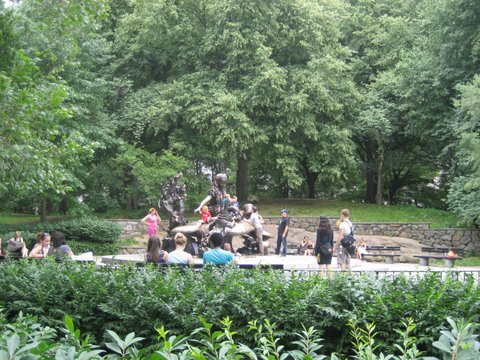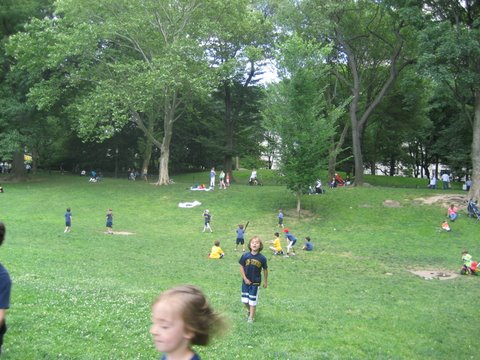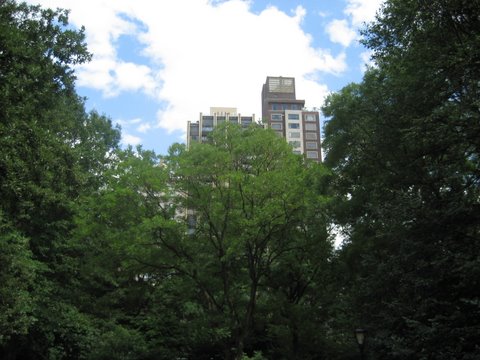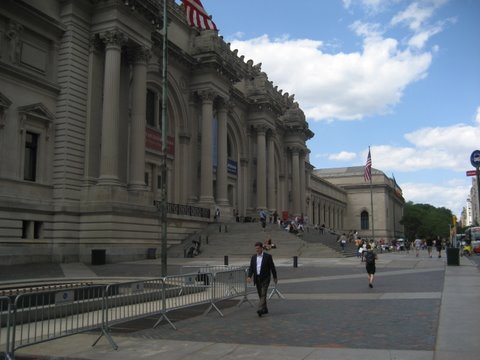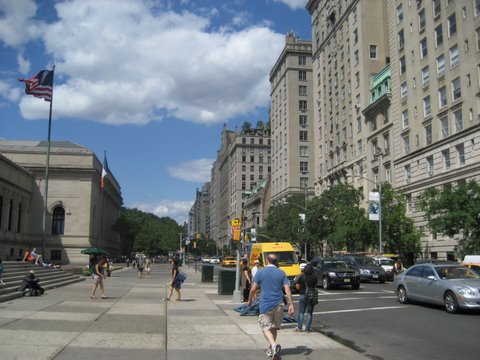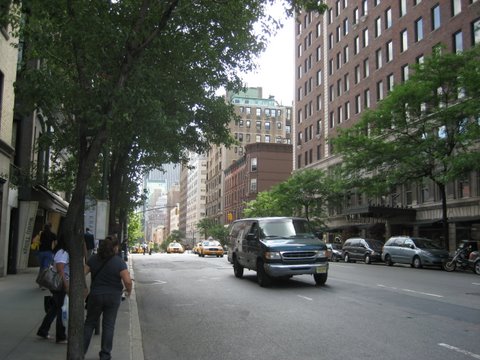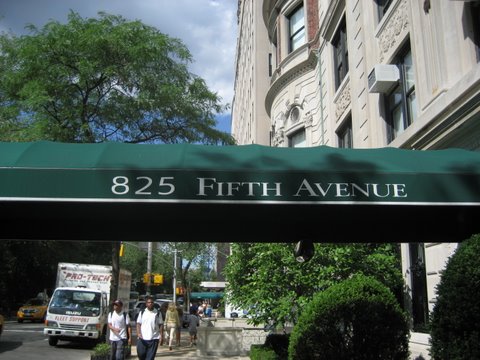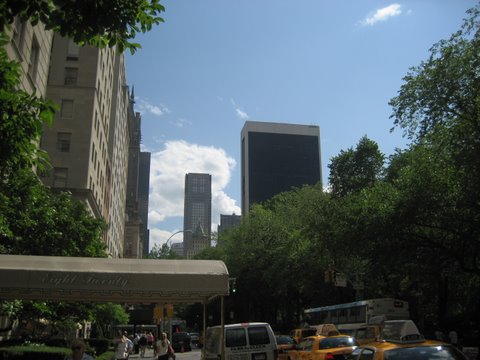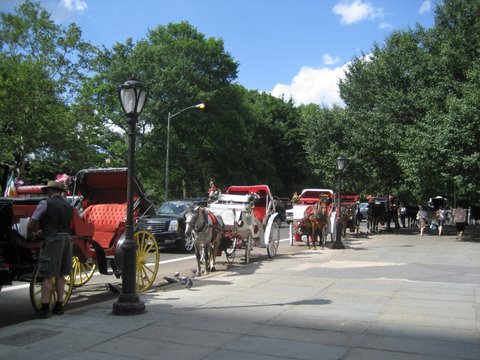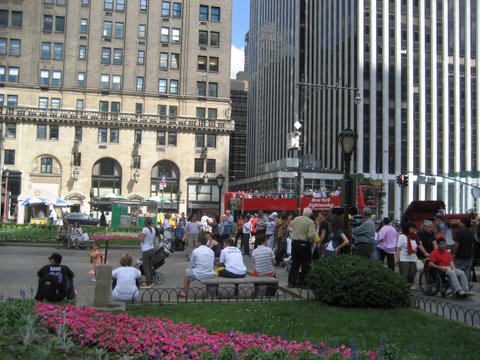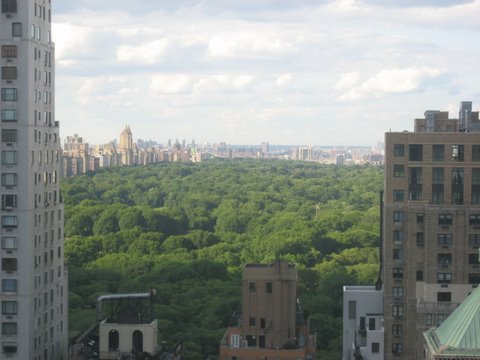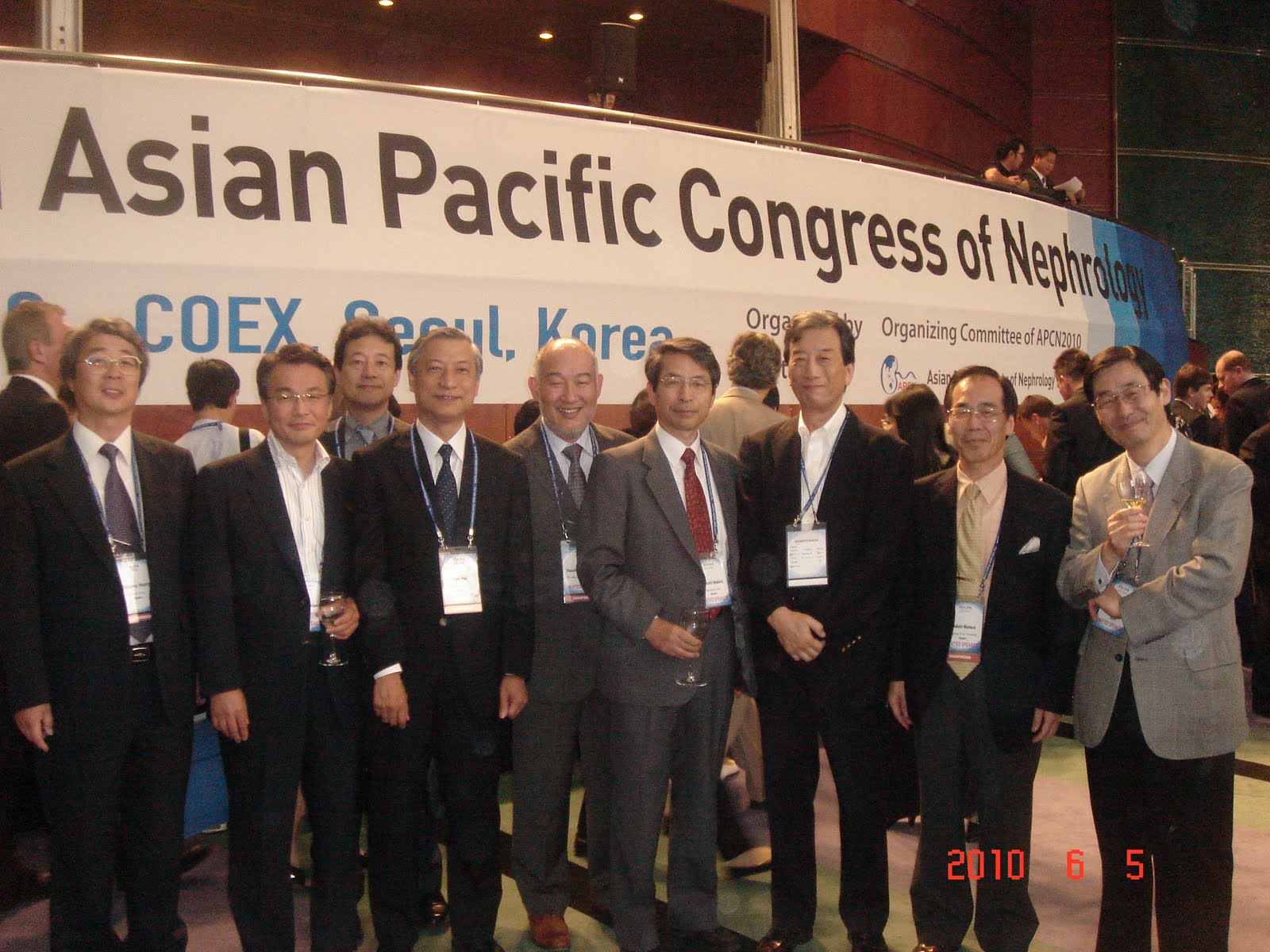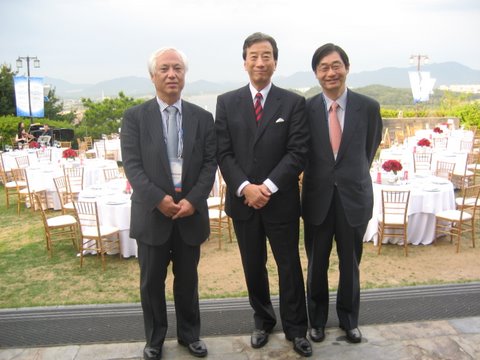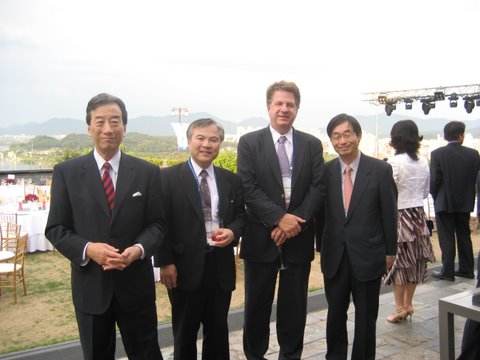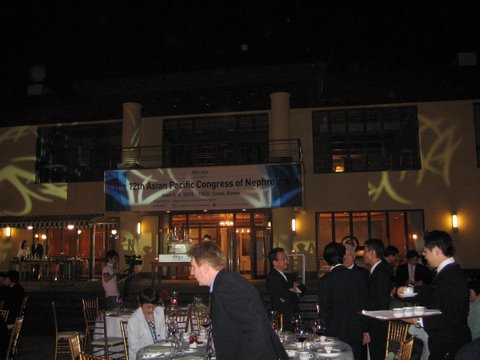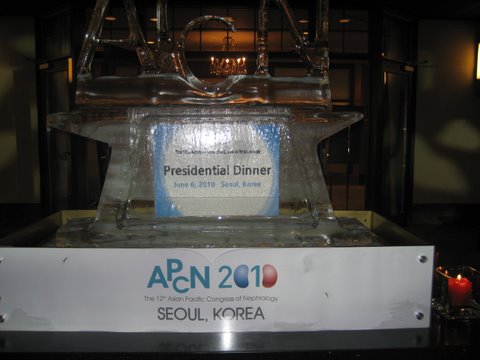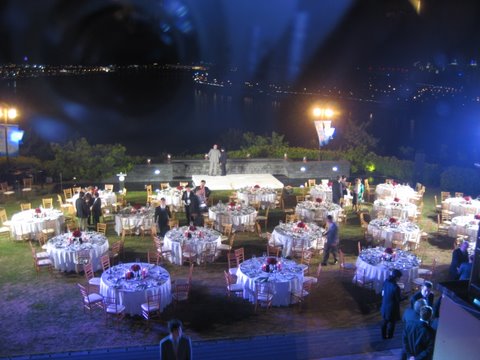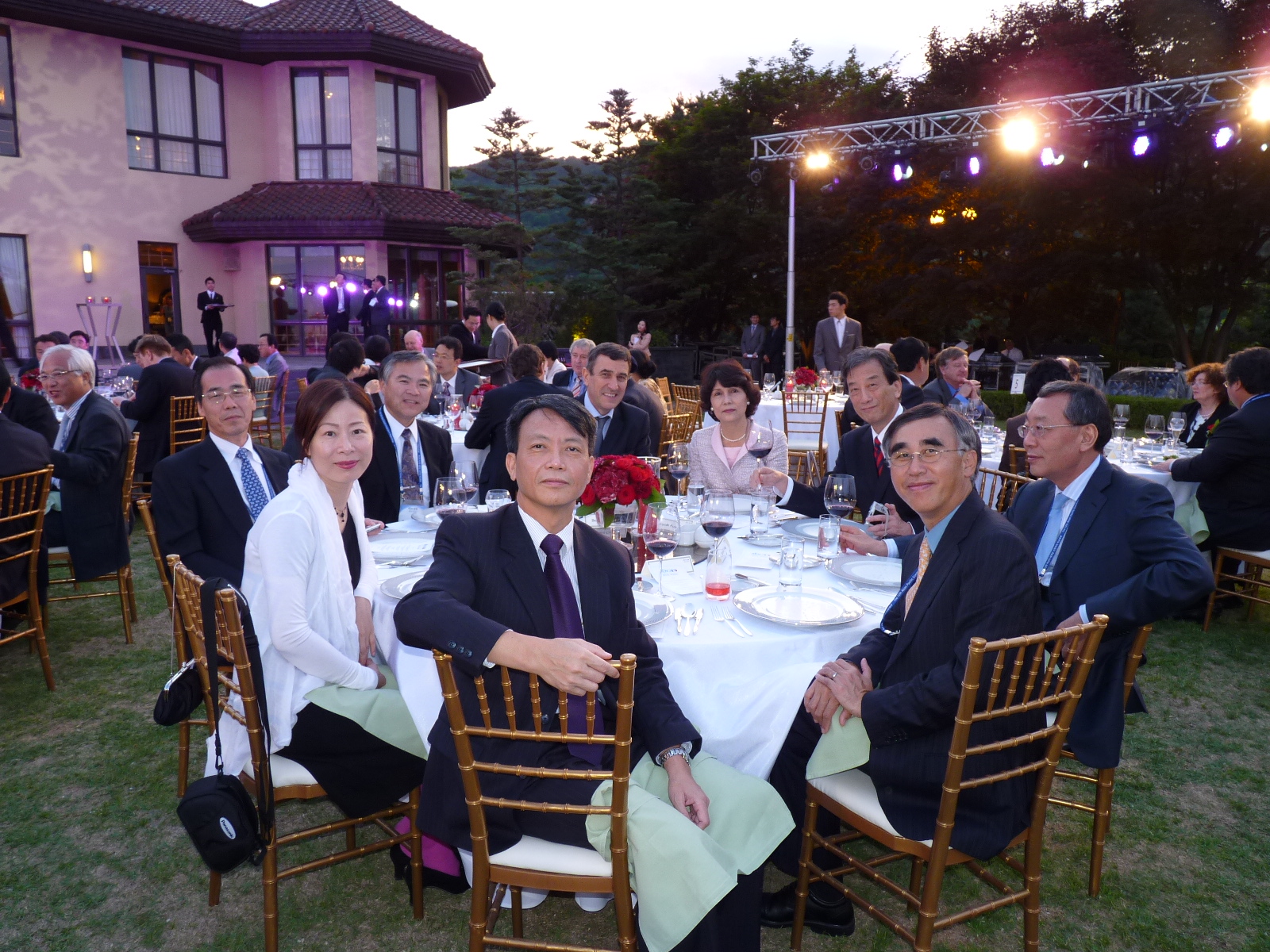In the morning of 9th, after the dialogue session with Mr. Toyama, I left for Hanoi. This travel is to join the 10th anniversary of the Kidney Center which I helped its foundation with Dr Tang and Dr Ann whom I have introduced to you last year. This plan is also an outcome of the effort by the International Society of Nephrology (ISN) for these 20 years of focusing its activities to the programs for developing countries
In 1990 the ISN meeting was held in Tokyo. I have been leading the ISN activities as a committee and executive member and later as the President (1997-99) of the ISN, so I was naturally involved in COMGAN program in reaching developing countries since its very beginning, and have traveled to Asia and many other parts of the world. Through various activities such as COMGAN, ISN has succeeded in constructing the networks of people throughout the world for 15 years including kidney specialists in many developing countries of the world. We celebrated the 50th anniversary of ISN last month although I had to be excused because of other responsibilities elsewhere.
Through more than 20 years of work at Asian Pacific Congress of Nephrology (Ref.1) and other activities, I have expanded my networks with many kidney specialists, medical leaders and scientists in Asia Pacific including Dr Tang and his colleagues, visited Hanoi and Ho Chi Ming City (former Saigon) a few times, and about 15 years ago we started to make plans for Kidney Center. The hospitals and clinics then were in terrible conditions that one may hardly imagine.
The Kidney Center is located within the hospital of Ministry of Transportation. It is an outcome of what we would call today the ‘Public Private Partnership’ between the government of Vietnam and a few corporations of Japan. Japanese companies did not necessarily pursue profits, but brought about a big success in creating jobs and enhancing the growth of local businesses. I attended their 5th anniversary, and now we are celebrating the 10th. We had a great exciting ceremony with large number of participants.
The accommodation at Hanoi was Intercontinental Hotel. I highly recommend to try this nice elegant hotel which stands by the lake if you have a chance to visit here.
On 11th, I moved to Ho Chi Ming City. Here, everything is much more ‘developed’ compared to Hanoi and was filled with completely different energy. I enjoyed dinner with my friends here at Cham Charm. I do not hesitate to recommend this restaurant to you also.
At any rate, every city is filled with motorbikes. I even saw a whole family riding on one bike. So energetic!
The return flight from Ho Chi Ming City was in the midnight of 11th, so I was able to hear the news of the overall result of the election of the Upper of Japan. I regret having had to miss watching the World Cup final game…. I congratulate Spain for the victory.
